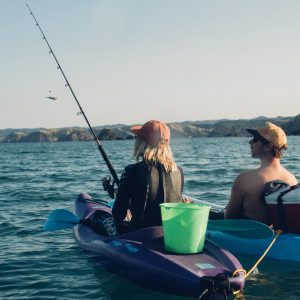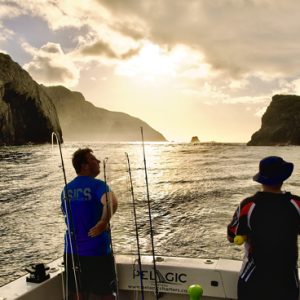Over 4.5 million snapper, 1.1 million kahawai and 680,000 blue cod were caught and kept by recreational fishers during 2011-12. These are the three most popular marine species, by number, in New Zealand. Around 5.4 percent of all finfish was taken from charter vessels.
These estimates and harvest figures for other popular species have been detailed in a report recently published by the Ministry for Primary Industries. It is the most comprehensive study undertaken in New Zealand and includes the methods used and the number of fishing trips. It includes harvest data for finfish, shellfish and other marine species.
This report is useful as it also provides ample data to counteract the claims that recreational catch is unknown and unmanageable. Our catch is being managed, by bag limits, your conservation efforts, or depletion.

Finfish catch
Given our earlier SOS – Save Our Snapper campaign LegaSea was particularly interested in the harvest estimates for snapper in area 1 (SNA1), on the northeast coast. In SNA1 the average weight of fish kept was 1.06kg, giving a total harvest of around 3,980 tonnes for 2011-12. This estimate is interesting when compared to the independent NIWA survey estimate of 3,754 tonnes.
The NIWA survey was undertaken in the same year and area, using both spotter planes to count the number of boats and boat ramp interviews to collect harvest information. These survey results have already been used in the SNA1 management review that gave rise to our SOS campaign in August 2013.
It seems that 2010-11 and 2011-12 were very good years for snapper catch in the Hauraki Gulf. Total harvest has declined since then, probably due to a lack of available fish in close to shore Kahawai was the second most popular species harvested nationally. A third of all this kahawai catch was taken by land-based fishers. On average these fish weighed 1.53kg, giving a national harvest of around 1,785 tonnes.
As you would expect, blue cod catch was highest in the South Island, with around 75 percent of the catch taken south of Cook Strait. Most of these blue cod were taken from boats using rod and line methods. The average weight nationally was 0.5kg, giving a total harvest estimate of around 333 tonnes.
Following the top three species, the next most popular harvest (by number) were red gurnard (430,500), tarakihi (361,000), trevally (174,000), sea perch (160,000), flounder and other flat fish (144,000). Kingfish were 12th on the numbers list (64,700) but had an average weight over 10kg for fish kept by the angler. This put kingfish at number three in the national harvest, by weight, at 662 tonnes. Most kingfish were caught by rod and line methods from boats, but land-based and spearfishing methods also feature in the survey.
Results from this research are valuable as no other recreational harvest survey can provide national coverage of all fishing methods. And while this new survey method is expensive, it is based on a sound statistical design and a large sample size. It is likely to be repeated every five years to meet the demand for recreational harvest information.
The finer detail
The National Research Bureau used a door-to-door survey of 30,390 homes to recruit over 7000 fishers. Data was collected using a carefully worded phone interview of all fishers at regular intervals from October 2011 to September 2012. It was important that fishers only reported what they personally caught, or their share of the catch if fishing as a group using a longline or set net.
Reported catch was scaled up to estimate total catch by New Zealand residents aged 15 years and older. The National Panel Survey, as it is called, has been reviewed and approved by international experts and will be repeated in 2016-17.
A New Zealand Sport Fishing Council science representative has attended all 18 of the MPI working group meetings and one Ministerial meeting over the last five years of planning, implementation and review. The full 145-page MPI report is online alongside an easy to read 1-page summary.





